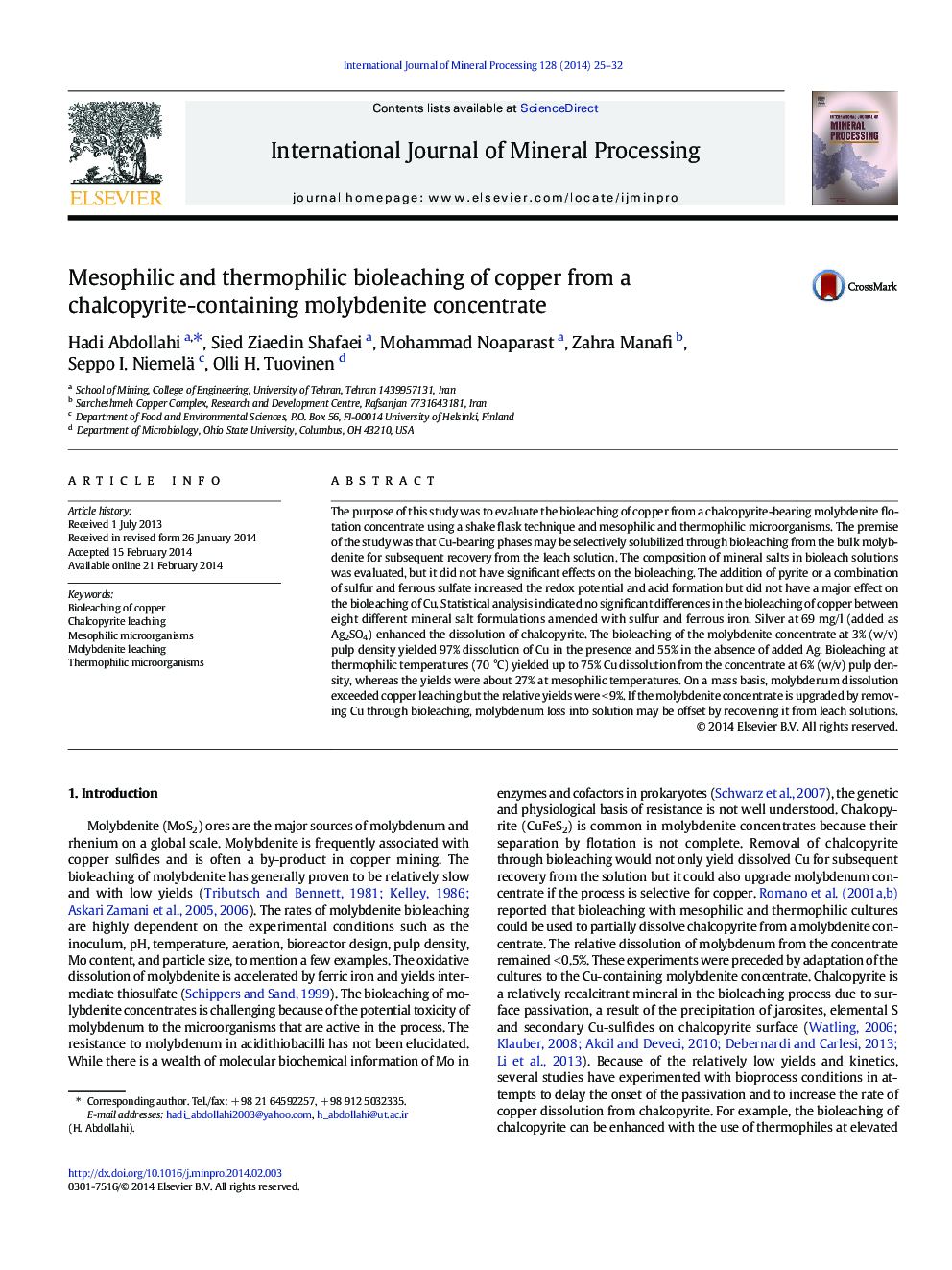| Article ID | Journal | Published Year | Pages | File Type |
|---|---|---|---|---|
| 214035 | International Journal of Mineral Processing | 2014 | 8 Pages |
•Bioleaching of chalcopyrite from molybdenite matrix was tested in shake flasks.•Mineral salt composition had no significant effect on the bioleaching of Cu.•The addition of Ag+ enhanced the bioleaching of chalcopyrite.•Bioleaching at 32 °C yielded up to 27% Cu dissolution from chalcopyrite.•Bioleaching at 70 °C yielded up 75% Cu dissolution from chalcopyrite.
The purpose of this study was to evaluate the bioleaching of copper from a chalcopyrite-bearing molybdenite flotation concentrate using a shake flask technique and mesophilic and thermophilic microorganisms. The premise of the study was that Cu-bearing phases may be selectively solubilized through bioleaching from the bulk molybdenite for subsequent recovery from the leach solution. The composition of mineral salts in bioleach solutions was evaluated, but it did not have significant effects on the bioleaching. The addition of pyrite or a combination of sulfur and ferrous sulfate increased the redox potential and acid formation but did not have a major effect on the bioleaching of Cu. Statistical analysis indicated no significant differences in the bioleaching of copper between eight different mineral salt formulations amended with sulfur and ferrous iron. Silver at 69 mg/l (added as Ag2SO4) enhanced the dissolution of chalcopyrite. The bioleaching of the molybdenite concentrate at 3% (w/v) pulp density yielded 97% dissolution of Cu in the presence and 55% in the absence of added Ag. Bioleaching at thermophilic temperatures (70 °C) yielded up to 75% Cu dissolution from the concentrate at 6% (w/v) pulp density, whereas the yields were about 27% at mesophilic temperatures. On a mass basis, molybdenum dissolution exceeded copper leaching but the relative yields were < 9%. If the molybdenite concentrate is upgraded by removing Cu through bioleaching, molybdenum loss into solution may be offset by recovering it from leach solutions.
